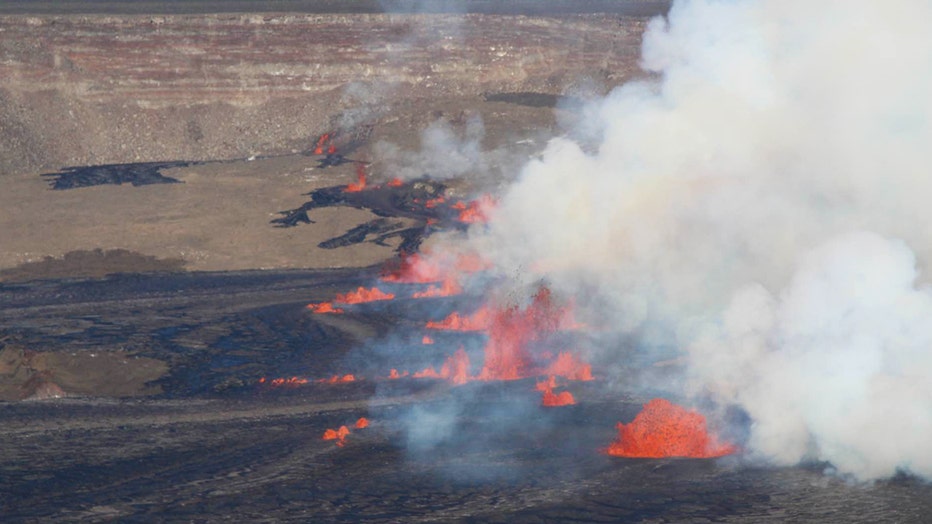Earthquakes increase at Hawaii's Kilauea Volcano; scientists note increased level of unrest
Hawaii - Mount Kilauea, the most active volcano in Hawaii, has seen the number of earthquakes at its summit double over the past week, according to the U.S. Geological Survey.
The summit region had gone from experiencing 10 earthquakes per day to 20 per day, officials said during their weekly update on the volcano. They noted that the activity has mostly occurred inside the mouth, or caldera, of the volcano and in the southern region of the caldera.
Most of the recorded earthquakes registered below a magnitude of 2.1.
Increased seismic activity was also detected in two of the rift zones, the USGS said.

A view of Kilauea volcano as it began to erupt around 3:15 a.m. on September 10, in Hawaii, United States. (Credit: M. Zoeller/US Geological Survey / Handout/Anadolu Agency via Getty Images)
The upper Southwest Rift Zone saw 25 earthquakes below a magnitude of 2 over the past two days, while the upper East Rift Zone saw between 25 and 60 earthquakes per day over the past two days, as well.
Officials said this rise in earthquake activity is due to a higher level of unrest at Kilauea’s summit region, compared to the activity of previous weeks.
This means that magma is accumulating within the volcano, causing the ground above to swell.
The USGS is maintaining a yellow "advisory" level-- the second on their four-rung alert scale. But because of this renewed ground movement, the USGS noted hazardous conditions in the area, such as uneven or rough terrain, crater wall instability and rockfalls.
The most recent eruption at Kīlauea occurred near Nāpau Crater within Hawai'i Volcanoes National Park from Sept. 15–20.

